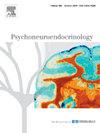毛发皮质醇测量:当前做法的系统性回顾和报告标准的拟议核对表
IF 3.4
2区 医学
Q2 ENDOCRINOLOGY & METABOLISM
引用次数: 0
摘要
总结毛发皮质醇浓度 (HCC) 方法可为实现方案标准化提供急需的数据,从而最大限度地提高未来各项研究结果的可比性。我们搜索了五个电子数据库,查阅了 11,716 篇出版物,这些出版物都集中在以前用于测量毛发皮质醇的方案上。我们的目的是确定每种方法在文献中的报道频率。然后,我们对 HCC 结果进行了荟萃分析,并提出了报告 HCC 相关方法程序的核对表。使用预先选择的关键术语,我们搜索了截至 2023 年 11 月发表的基于人群的、报告 HCC 结果的非实验性研究。定性分析包括 87 个分析样本,定量分析包括 28 个样本。所分析的研究主要包括儿童(≤10 岁;45.4%),参与者主要来自欧洲人群(72.6%)。各项研究的头发样本采集程序差异很大。大多数研究采用长度不超过 3 厘米的头发样本(92%),约三分之一的研究采用磨碎法(33.3%)或碾碎法(29.9%)。在定量方面,LC-MS 是最常用的方法(47.1%),其次是 ELISA(24.1%)。元分析表明,观察到的平均 HCC 存在显著差异。元回归显示,方法差异与 HCC 之间没有关联。总之,HCC 研究缺乏标准化方案可能会导致程序上的差异,从而难以比较不同研究的结果。许多已发表的研究在描述其方法时缺乏足够的细节。为了解决这个问题,我们提出了一份与 HCC 相关的测量程序报告指南清单。本文章由计算机程序翻译,如有差异,请以英文原文为准。
Hair cortisol measurement: A systematic review of current practices and a proposed checklist for reporting standards
Summarising hair cortisol concentration (HCC) methodology may provide much-needed data toward protocol standardisation to maximise future comparability of findings across studies. We searched five electronic databases, reviewing 11,716 publications focused on protocols previously used to measure hair cortisol. Our aim was to determine the frequency with which each procedure was reported in the literature. We then conducted a meta-analysis of the HCC results and proposed a checklist for reporting methodological procedures related to HCC. Using pre-selected key terms, we searched for population-based, non-experimental studies reporting HCC outcomes published up to November 2023. Eighty-seven analytical samples were included in the qualitative analysis and 28 in the quantitative analysis. The analyzed studies predominantly included children (≤10 years; 45.4 %) and mainly involved participants from European populations (72.6 %). There was significant variation in hair sample collection procedures across the studies. Most used hair samples up to 3 cm in length (92 %), with around one-third employing either milled (33.3 %) or minced (29.9 %) as grinding methods. For quantification, LC-MS was the most common method (47.1 %), followed by ELISA (24.1 %). Meta-analysis showed significant variability in the mean HCC observed. Meta-regression showed no association between differences in methodology and HCC. In conclusion, the absence of a standardized protocol in HCC research may result in procedural variability, making it difficult to compare findings across studies. Many published studies lacked sufficient detail in describing their methods. To address this, we propose a checklist of reporting guidelines for measurement procedures related to HCC.
求助全文
通过发布文献求助,成功后即可免费获取论文全文。
去求助
来源期刊

Psychoneuroendocrinology
医学-精神病学
CiteScore
7.40
自引率
8.10%
发文量
268
审稿时长
66 days
期刊介绍:
Psychoneuroendocrinology publishes papers dealing with the interrelated disciplines of psychology, neurobiology, endocrinology, immunology, neurology, and psychiatry, with an emphasis on multidisciplinary studies aiming at integrating these disciplines in terms of either basic research or clinical implications. One of the main goals is to understand how a variety of psychobiological factors interact in the expression of the stress response as it relates to the development and/or maintenance of neuropsychiatric illnesses.
 求助内容:
求助内容: 应助结果提醒方式:
应助结果提醒方式:


